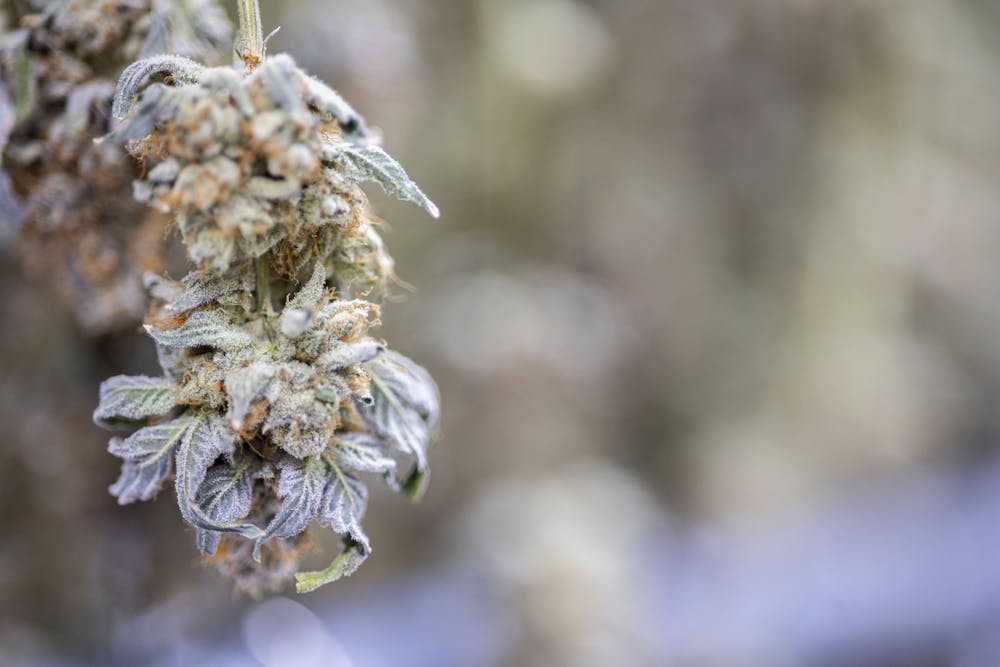FDA, HHS recommend reclassification for cannabis
If approved, new rating would acknowledge medical use, reduced risk
The top federal agency for drug and health policy has recommended that cannabis products containing THC – better known as marijuana – be reclassified.
In a letter dated Aug. 29, 2023, and published Jan. 12, Dr. Rachel Levine, assistant secretary for health at the U.S. Department of Health and Human Services, recommended that botanical cannabis be reduced from a Schedule I drug to a Schedule III under the federal Controlled Substances Act. She based the guidance on Food and Drug Administration (FDA) findings that the plant and THC products better aligned with the less-hazardous classification.
In an email to Central Michigan Life, a spokesperson for Health and Human Services – the parent agency under which the FDA operates – wrote that the recommendation has been sent to the U.S. Department of Justice (DOJ) for further review.
“HHS has concluded their independent review, guided by the evidence,” the spokesperson, who declined to provide further information, including their name, wrote. “These documents reflect HHS’ evaluation of the scientific and medical evidence and its scheduling recommendation to DOJ.”
However, the 252-page review and report, addressed to Drug Enforcement Administration chief Anne Milgram, detailed nearly two years’ of research.
In its review, the FDA examined eight factors in an effort to understand marijuana’s “relative abuse potential compared to other drugs, whether it has a currently accepted medical use … in treatment in the United States … and its relative safety or ability to produce physical dependence compared to other drugs,” according to the report.
Those factors included:
- A substance’s actual or relative potential for abuse;
- Scientific evidence of a substance’s pharmalogical, or medicinal, effect;
- Current scientific understanding of the chemical;
- Its history and current pattern of abuse;
- The scope, duration and significance of any abuse;
- What, if any, risk there the substance poses to public health;
- The risk of psychological or physical dependence;
- Whether the substances is an immediate precursor of a substance that is already controlled under federal law – which is to say, whether the drug is a primary component in the manufacturing of another controlled substance.
The review followed an Oct. 6, 2022, request from President Joe Biden. In a statement calling cannabis regulations at the time a “failed approach,” the president laid out a three-pronged plan to pardon people convicted of simple marijuana offenses in Federal prisons; to encourage governors to pardon those convicted of simple state offenses; and to review how marijuana is scheduled under federal law.
He noted that the schedule I classification placed cannabis alongside heroin and LSD, and labeled it more dangerous than fentanyl and methamphetamine. But the president emphasized that, “important limitations on trafficking, marketing and under-aged sales should stay in place.”
“Too many lives have been upended because of our failed approach to marijuana,” Biden concluded in his statement. “It’s time that we right these wrongs.”
The FDA not only reviewed existing research and medical findings, but compared the reports of marijuana abuse to other, common substances currently on the prescription and black markets today. Those included heroin, fentanyl, oxycodone, hydrocodone, cocaine, ketamine, benzodiazepines, zolpidem, tramadol and alcohol. Liquor, the report noted, has been exempted from federal control since the Controlled Substances Act was signed in 1970.
“Typically,” the report read, “substances that are not controlled under the CSA are not utilized as comparator drugs for scheduling placement comparisons because they may not have been formally evaluated for abuse potential. … However, alcohol is included in the analysis because of its extensive availability in the United States, which is also observed for nonmedical use of marijuana (also known as recreational use of marijuana.)”
Since its enactment 54 years ago, the Controlled Substances Act has listed marijuana as a Schedule I controlled substance. According to the Drug Enforcement Administration’s website, that means lumps it in with heroin, LSD ecstasy, methaqualone and peyote as “drugs with no currently accepted medical use and a high potential for abuse.”
Schedule III drugs, according to Dr. Levine’s report, have “a potential for abuse less that other substances in Schedules I and II, a currently accepted medical use in treatment in the United States, and moderate or low physical dependence or high psychological dependence that may result from their use.”
If the schedule change gets the Drug Enforcement Administration’s blessing, marijuana would be classified along medically regulated drugs such as Tylenol with codeine, ketamine, anabolic steroids and testosterone.




